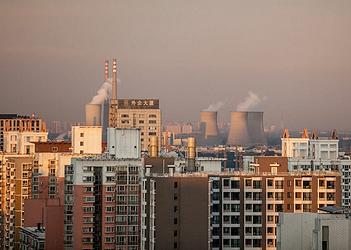
GENEVA, Switzerland, October 26, 2016 (ENS) – For the first time this year, the concentration of carbon dioxide (CO2) in Earth’s atmosphere is projected to reach the milestone of 400 parts per million on a global average basis for an entire year, according to the World Meteorological Organization.
The WMO’s annual “Greenhouse Gas Bulletin” issued Tuesday says that CO2 levels had previously reached the 400 ppm mark for certain months of the year 2015 and in certain locations but never before on a global average basis for a whole year.

WMO Secretary-General Petteri Taalas said, “The year 2015 ushered in a new era of optimism and climate action with the Paris climate change agreement. But it will also make history as marking a new era of climate change reality with record high greenhouse gas concentrations. The El Niño event has disappeared. Climate change has not.”
The world’s longest-established greenhouse gas monitoring station at Mauna Loa, Hawaii, predicts that CO2 concentrations will stay above 400 ppm for the whole of 2016 and not dip below that level for many generations.
The growth spurt in CO2 was fueled by the El Niño event, which started in 2015 and had a strong impact well into 2016.
The El Niño event, a warm-water event in the Eastern Tropical Pacific Ocean, triggered droughts in tropical regions and reduced the capacity of “sinks” like forests, vegetation and the oceans to absorb CO2.
These sinks currently absorb about half of all carbon dioxide emissions, but there is a risk that they may become saturated, which would increase the fraction of emitted CO2 that stays in the atmosphere, according to the “Greenhouse Gas Bulletin.”

Between 1990 and 2015 there was a 37 percent increase in the warming effect on Earth’s climate because of long-lived greenhouse gases such as carbon dioxide, methane and nitrous oxide (N2O) from industrial, agricultural and domestic activities, the WMO reports.
“Human activities such as the burning of fossil fuels has altered the natural balance and in 2015, globally averaged levels were 144 percent of pre-industrial levels,” the agency states.
“The recent agreement in Kigali to amend the so-called Montreal Protocol and phase out hydrofluorocarbons, which act as strong greenhouse gases, is good news,” said Taalas. “WMO salutes the commitment of the international community to meaningful climate action.”
“But the real elephant in the room is carbon dioxide, which remains in the atmosphere for thousands of years and in the oceans for even longer,” he said.
“Without tackling CO2 emissions, we can not tackle climate change and keep temperature increases to below 2°C above the pre-industrial era. It is therefore of the utmost importance that the Paris Agreement does indeed enter into force well ahead of schedule on November 4 and that we fast-track its implementation.” said the WMO chief.

The “Greenhouse Gas Bulletin” provides a scientific base for decision making. WMO released it ahead of the United Nations climate change negotiations in Marrakech, Morocco, to be held from November 7–18.
The WMO “Greenhouse Gas Bulletin” reports on atmospheric concentrations of greenhouse gases. Emissions represent what goes into the atmosphere. Concentrations represent what remains in the atmosphere after the complex system of interactions between the atmosphere, biosphere, cryosphere and the oceans.
WMO and partners are working towards an Integrated Global Greenhouse Gas Information System to provide information that can help nations to track the progress toward implementation of their national emission pledges under the Paris Agreement on Climate Change, to improve national emission reporting and to inform additional mitigation actions.
WMO is also striving to improve weather and climate services for the renewable energy sector and to support the Green Economy and sustainable development.
The agency says that to optimize the use of solar, wind and hydropower production, new types of weather services are needed.
The WMO Global Atmosphere Watch Programme coordinates systematic observations and analysis of greenhouse gases and other trace species.
Fifty-one countries contributed data for the “Greenhouse Gas Bulletin.” Measurement data are reported by participating countries and archived and distributed by the World Data Centre for Greenhouse Gases at the Japan Meteorological Agency.
Copyright Environment News Service (ENS) 2016. All rights reserved.
© 2016, Environment News Service. All rights reserved. Content may be quoted only with proper attribution and a direct link to the original article. Full reproduction is prohibited.
